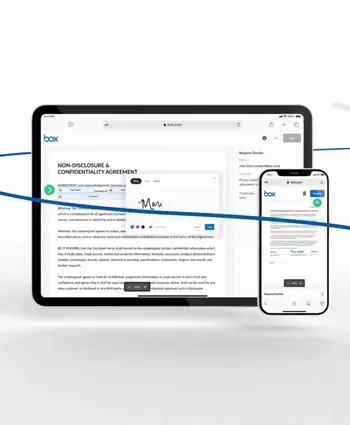
How to Create a Video Content Marketing Strategy [Free Template]
Incorporate video into your content strategy with our free template for a video content marketing strategy.
Before you invest in video content for your brand, you're going to need a content marketing strategy. This gives your content purpose and focus allowing you to plan for success.
Whether that's for corporate videos and explainer animations, all the way to TV commercials and viral marketing, a well thought out video content marketing strategy is essential.
 Video Content Marketing Strategy Template
Video Content Marketing Strategy Template
Step away from rushed, ad hoc projects. Create more strategic and effective video content.
Download our simple template for the planning framework you need to integrate video content into your content marketing strategy.
 Content marketing has been the buzzword in marketing for about a decade now, and for good reason. It's a customer-friendly and cost-effective way to generate, engage, and convert leads.
Content marketing has been the buzzword in marketing for about a decade now, and for good reason. It's a customer-friendly and cost-effective way to generate, engage, and convert leads.
But what about video content marketing?
Well, it involves the same principles as content marketing, but applied to video.
It means incorporating video fluidly into your entire marketing strategy. It means moving away from rushed video projects towards well-planned video campaigns. It means creating quality, valuable, efficient video content to guide leads through every stage of the marketing funnel.
To do video content marketing well you must first research, plan, and build a solid strategy.
We're here to guide you through that strategy. Here are the 5 areas to think about when creating a video content marketing plan. Download our template (including examples) for a simple structure to fill with all your research, and let's get started.
5 Steps to Planning Your Video Content Marketing
1. Know Thyself (And Thy Goals)
Yes, video content marketing is about giving your audience what they truly find valuable. But you can't do it well without also being comfortable with your own business, brand, and USP.
That's why a video content strategy should always start with an honest review of what makes your brand different, and what existing customers love about you. What will you need to communicate about yourself to your audience? What are your most important values? What drives everything you do?
Secondly, assess your goals for video content marketing. Don't jump straight to the kinds of videos you'd love to create: think about the problems or opportunities you're trying to tackle in the first place. What do you want to achieve? What does success look like?
Here are some examples of goals you might want to achieve with video:
- Increased awareness of your brand
- Higher conversions on your landing pages
- Greater audience understanding of your products or services
- More engagement with leads and customers
The more specific you are with your aims, from driving traffic to boosting conversions, the more likely you are to create the content needed to achieve them.
2. Understand Your Audience
Your video content will only ever be as good as your understanding of your target audience. Without really getting to grips with who your viewers are and what they care about, you won't able to create the types of videos necessary to guide them through their buyer's journey.
What you need are deep insights into your audience. To find them you'll need to run surveys, conduct interviews and sift through data. Start by gathering basic information like demographics, then move onto more detailed considerations of personality and preferences. Be sure to get to the root of what your audience need, what they want, and which problems you can help them with.
Once you've got enough data, consider splitting your audience into distinct groupings known as buyer personas. These should reflect commons archetypes found again and again in your customer base, and will allow you to more effectively tailor your video content to connect with your audience.
3. Assess the Market and Your Competition
The next key step involves identifying gaps both internally in your own content and externally in the wider market. This allows you to find untapped opportunities for video content success.
Begin with a review of your existing video content. Which formats and topics have you covered, and which have you missied? What's working and what isn't? A thorough audit will help to pick out the strengths and weaknesses of your current videos and suggest areas for improvement. Check out our blog post for a guide to conducting your own video audit.
Then examine what you're up against. Who are the major competitiors in your market and what video content are they producing? What's already out there for your audience to find? What is everybody else doing and what success are they finding?
Once you're done you should have a complete map of video gaps to take advantage of.
4. Decide How to Position Your Content
Now that you know your current position in relation to your competition, it's time to decide how you're going to stand out with your video content. How are you going to create better content than them? What will you do that nobody else does? Which gaps will you fill?
It all boils down to your video USP: the factors that make what you offer new and unique. You should lay out how you aim to distinguish yourself while also staying true to your brand and your objectives.
This should include brief descriptions of:
- The types of video content you plan to create
- Their style and tone
- The topics you'll cover
- How that content will reach your audience
5. Plan Your Video Content Marketing Funnel
Now you need to take all the research you've gathered so far and use it to construct your own video content marketing funnel.
 The funnel should detail the types of content you'll create at every stage of the buyer's journey, from awareness to consideration to decision. It should work as a cohesive whole to guide leads all the way from first touch to closed sale (and beyond).
The funnel should detail the types of content you'll create at every stage of the buyer's journey, from awareness to consideration to decision. It should work as a cohesive whole to guide leads all the way from first touch to closed sale (and beyond).
Include specifics of how your video content will appeal to your target audience, the content gaps it will fill, and how and where it will be used, reused and distributed.
Wondering which types of video content work best at each stage of awareness? Read our blog post about video content marketing through the funnel.
Round-up: Start Video Content Marketing
If you've followed all 5 steps you should now have an entire funnel of video content planned. Our simple template will help you keep track of all this planning in a single place that can be easily updated as you integrate new types of video content into your marketing strategy over time.
A plan like this will mean your video marketing is confident and effective, rather than confused and aimless. Congratulations! You've taken the first step to creating smart, strategic video campaigns.
Once you're happy that your strategy is sound, you can move onto planning the production of your individual videos. In this case you may well find our video brief template useful too.
 Video Content Marketing Strategy Template
Video Content Marketing Strategy Template
Step away from rushed, ad hoc projects. Create more strategic and effective video content.
Download our simple template for the planning framework you need to integrate video content into your content marketing strategy.
Written by Lydia Cockerham Copywriter for Venture Videos — a full-service video production agency that specialises in producing creative videos & campaigns that get real results.


![How to Write a Video Brief in 7 Easy Steps [Free Video Briefing Template]](https://www.venturevideos.com/hubfs/Download%20images/video%20production%20brief%20template%20optimised.webp)



